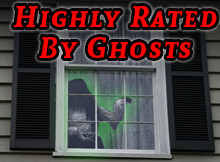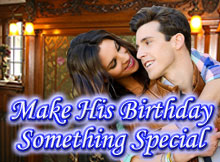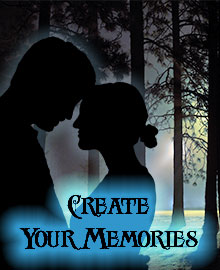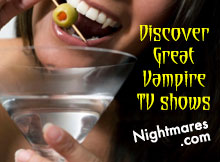
The six-inch thick dossier compiled by the Prefecture of Police in Paris is labeled simply "Accident Mortel de la Circulation Date 31/8/97 Heure 00h30." The file name is dry, but its contents are provocative. Nestled among sheets of police reports, carefully sketched diagrams and statements from witnesses are photographs of Diana in the wreckage of the Mercedes. Taken by a paparazzi, Diana, eyes open, appears conscious and unhurt; there is no sign of blood. Appearances aside, Diana was hurt – badly hurt. And less than four hours later, she was dead.
The world still wonders what, exactly, happened
that night. With painstaking detail, the French police have put
together a file that answers many of those questions. The dossier
and interviews with those on the scene of the accident reveal surprising
new details about the crash that on August, 31 killed Diana, her
lover Dodi Fayed and driver Henri Paul, and seriously injured bodyguard
Trevor Rees-Jones.
The file begins at 12:23 a.m., in the Place de
l' Alma Tunnel. It notes that paparazzi, who had been stalking Diana
and Dodi since their arrival earlier that day in Paris, appeared
on the scene two minutes after the collision. A minute behind them
was Frederic Mailliez, an emergency doctor employed by SOS Medecins,
a private firm. In an interview with "Newsweek," he described
what happened next. "I held her hand and spoke to her, took
her pulse, put the resuscitation mask on her, assured her that she
was safe." He also called for help. Within five minutes of
the accident, two ambulances arrived, each with a doctor.



It took the emergency workers a full fifty-two
minutes to place Diana in the ambulance. It proceeded slowly along
the Seine, led by a motorcycle escort. At the Point d' Austerlitz,
a short distance from the hospital, the motorcade pulled off the
road; Diana's heart had stopped beating. She was injected with a
strong dose of adrenaline, and the ambulance continued on. Finally,
at l:05 in the morning, 43 minutes after leaving the scene, Diana
arrived at the Pitie-Salpe-triere Hospital, a 3.7-mile trip. After
trying for two hours to save her, doctors at 4:05 a.m. officially
pronounced Diana dead.
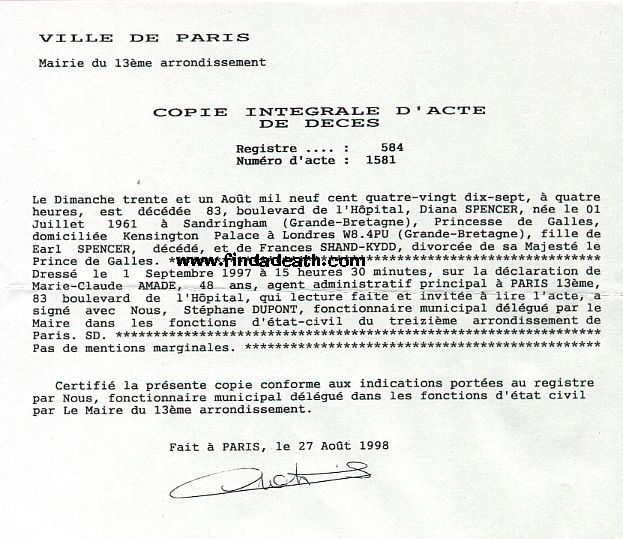
To many, the elapsed time from the arrival of the
ambulance at the accident scene to the hospital – a total of one
hour and forty-five minutes – seemed inordinately long. Diana, after
all, didn't have to be cut out of the car (though both Rees-Jones
and Paul did). In addition, the ambulance bypassed at least two
major hospitals. To Parisians, the pace of the trip was entirely
understandable. French ambulances are always staffed with a fully
qualified doctor and are considered an extension of the hospital;
driving slowly is standard. "It's worse to go fast," says
Mailliez. "Braking and accelerating can literally kill your
patient, because the blood races to head and feet alternately."
And the Pitie-Salpetriere has the best-equipped emergency room in
Paris.
In the end, Diana's internal injuries were so massive
(most important, a severe lesion to her pulmonary vein) that even
if the accident had happened in front of an emergency room, she
couldn't have been saved. In lay terms, "her heart had been
ripped out of its place in her chest," says Mailliez. "There
was no chance for her."
 No chance even for her to speak? News reports said
the Fayed family had been giving a message containing Diana's final
requests, but a spokesman at the Pitie-Salpetriere said that "during
her hours at the hospital, Diana, Princess of Wales, was unconscious
and could therefore make no statements or remarks. If Diana had
any last words, Mailliez probably heard them. The paparazzi at the
scene have been quoted as saying that Diana told rescue workers,
"Leave me alone" and "My God." Mailliez would
not tell "Newsweek" what Diana said. "I must respect
the privacy of the patient." Could she have left any message
to pass on to family? When you're in that kind of pain, you don't
care about giving testaments to the next generation. The only thing you
think of expressing is the pain."
No chance even for her to speak? News reports said
the Fayed family had been giving a message containing Diana's final
requests, but a spokesman at the Pitie-Salpetriere said that "during
her hours at the hospital, Diana, Princess of Wales, was unconscious
and could therefore make no statements or remarks. If Diana had
any last words, Mailliez probably heard them. The paparazzi at the
scene have been quoted as saying that Diana told rescue workers,
"Leave me alone" and "My God." Mailliez would
not tell "Newsweek" what Diana said. "I must respect
the privacy of the patient." Could she have left any message
to pass on to family? When you're in that kind of pain, you don't
care about giving testaments to the next generation. The only thing you
think of expressing is the pain."
Locating the car and its driver would help confirm
the investigators' working scenario of the crash. Police believe
that driver Henri Paul braked suddenly when he came upon a slow-moving
car in the Alma tunnel, then sped up and tried to pass the car on
the left. Tire tracks a few feet farther into the tunnel suggest
that in trying to regain control of the car, Paul stepped on the
gas – and lost control.

The French police, by reconstructing the accident
in the Alma tunnel two weeks ago and consulting photographs taken
at the scene, have solved some of the mystery. The pictures
(most confiscated from the paparazzi) showed that, contrary to what
was at first thought, six cars passed the wreck before traffic was
stopped. During the reconstruction, everyone also noticed that the tunnel's
yellowish lighting greatly distorted color.
It had been assumed that all of the photographers
were some 200 meters behind the Mercedes when it entered the tunnel
from the Place de la Concorde. But there is significant evidence,
"Newsweek" has learned, that at least one was on a motorcycle
in front of the Mercedes. Mark Butt, a friend of Dr. Mailliez's
who arrived on the scene with him, said that as they approached
the tunnel from the west, they saw a motorcycle with a single rider
emerge from the east – traveling in the same direction as the Mercedes.
Butt says it stopped, made a U-turn and drove against the direction
of traffic back into the tunnel.
If Diana had died in the United States, someone could
ultimately be held financially responsible for her demise. But, the
Princess of Wales died in France, where massive
punitive awards are neither the custom nor the law.
Princess Di Overview * Photos * Conspiracy Theories
Death Driver's Last Night * That Night - After The Crash * OUR CONCLUSION
> PRINCESS DIANA IS STILL IN THE NEWS <
Princess Diana Content Copyright © 1996 to by The Web Network Inc
Ballcaps.com * HistoricClub.com * MurderMysteries.com * ReceptionMansion.com



